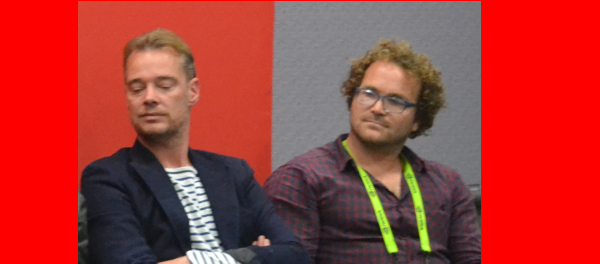August 2015, Siggraph – Two panelists came from Amsterdam to attend Siggraph 2015 and at the Lenovo’s panel share discussion about their new project. Tim Geurtjens and Gijs Van Der Velden are co-founders of MX3D, a company researching and developing groundbreaking robotic 3D printing technology. They developed 3D large scale printers that allowed printing large structures and different materials including plastic, stainless steel and aluminum. Tim and Gijs recently came up with an ambitious plan to build a steel bridge over the canal in Amsterdam. Geurtjens confessed that idea of building a bridge using 3-D printing techniques started with frustration about the 3D printing market. “We use 3D printers all the time, but they make only the small parts. We asked the companies that manufacture 3-D printers to develop printers for large parts but the companies were not interested in developing them” said Guertjens, “so we decided to do it on our own.”
Tim and Gijs discussed their plan to build a 3D printed steel bridge over the canal in Amsterdam. “We want to show the world what that technique could do”. The founders of MX3D are getting government support for this project as the city officials are really interested in presenting Amsterdam as an innovative and progressive city. Even though they invented the technology, they estimate that it will take them a year to understand fully, the capacity and the limits of their technology in an outdoor application and do a design. The starting date is set for spring 2017 and with an estimate to take 3-4 months to print the bridge. The most interesting thing about this 3-D image technique is that we can not only print the building as a new object, but we can use the multi-robots in the system to build in place from an existing structure. In that case, the projects can be of unlimited size” said Geutjens.
Using these 3D printing techniques, it is possible to recreate things. Geurtjens sees the printers as an extension of the existing techniques. Currently, there is a Chinese company that is us using additive manufacturing to print buildings, but it is more efficient and most appreciated, if we use the technology to create additional decorative pieces. It is well known that decoration is the heart of architecture. The use of computers and printers allows these designs to be extravagant, as it does not matter how complex the pieces are. Why use traditional techniques if we can add to them with the time and money consuming details?
